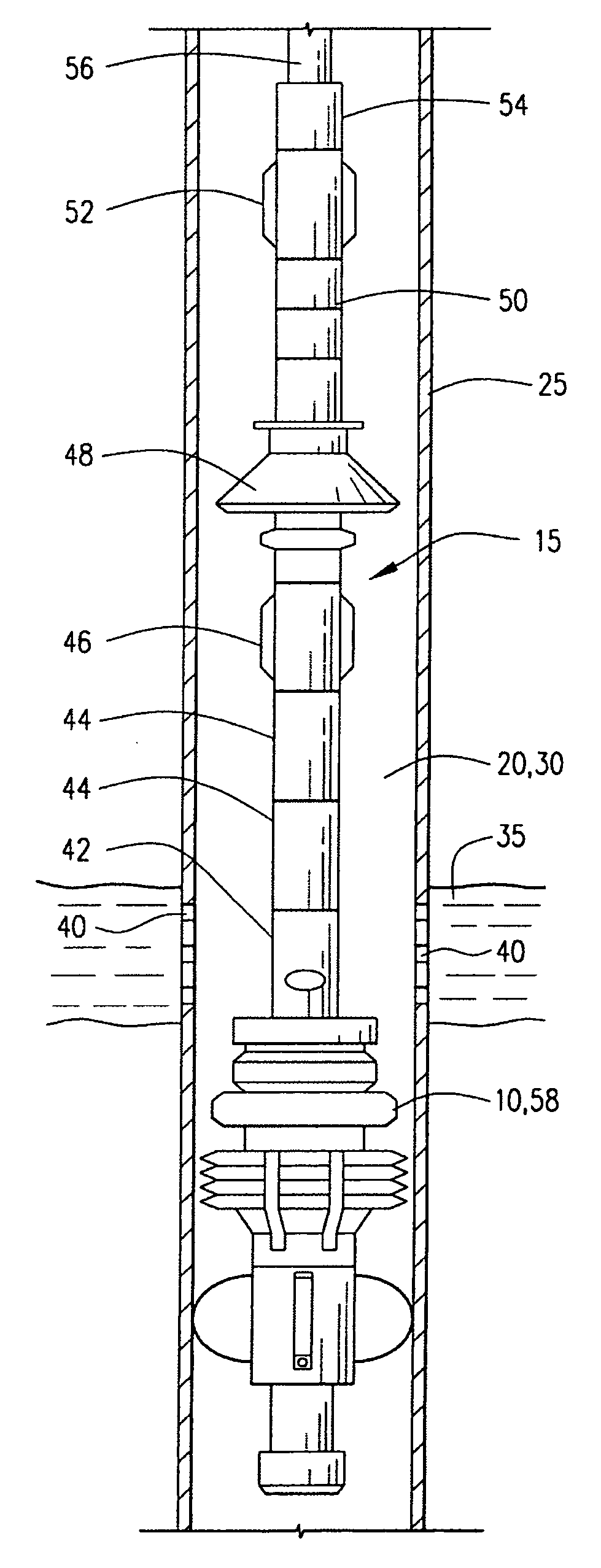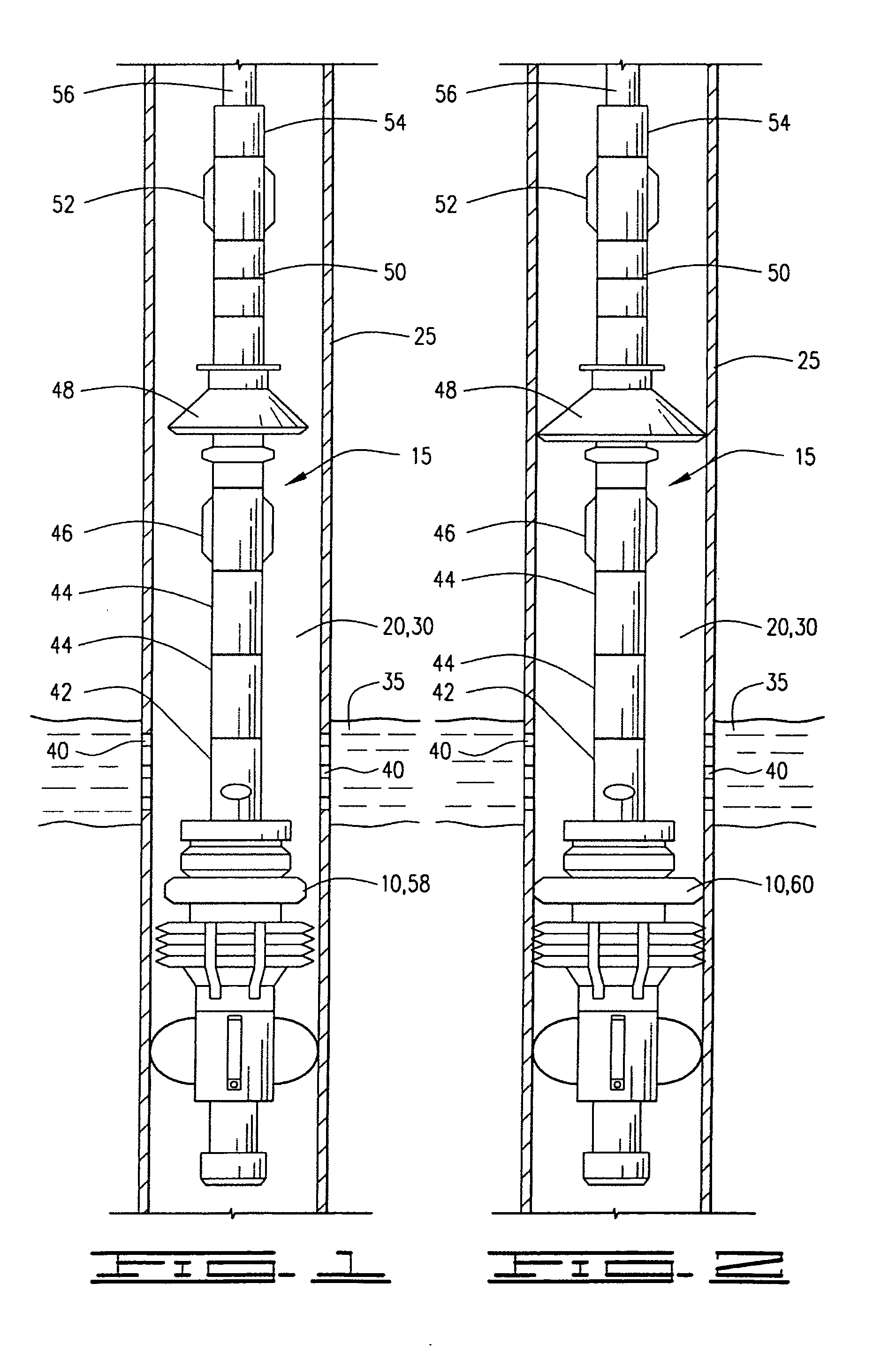While the use of gelled and crosslinked
polysaccharide-containing fracturing fluids has been successful, such fracturing fluids often have not been thermally stable at temperatures above about 200° F. That is, the
viscosity of the highly viscous gelled and crosslinked fluids may decrease over time at high temperatures.
To offset the decreased
viscosity, the concentration of the viscosifier often may be increased, which may result in, inter alia, increased costs and increased friction pressure in the tubing through which the
fracturing fluid is injected into a subterranean formation.
This may increase the difficulty of pumping the fracturing fluids.
However, the use of thermal stabilizers also may increase the cost of the fracturing fluids.
Certain types of subterranean formations, such as certain types of shales and coals, may respond unfavorably to fracturing with conventional fracturing fluids.
For example, in addition to opening a main, dominant fracture, the fracturing fluid may further invade numerous natural fractures (or “butts” and “cleats,” where the formation comprises
coal) that may intersect the main fracture, which may cause conventional viscosifiers within the fracturing fluid to invade intersecting natural fractures.
When the natural fractures re-close at the conclusion of the fracturing operation, the conventional viscosifiers may become trapped therein, and may obstruct the flow of hydrocarbons from the natural fractures to the main fracture.
This may be problematic, inter alia, where the production of hydrocarbons from the subterranean formation involves processes such as
desorption of the
hydrocarbon from the surface of the formation.
However, this may be problematic, inter alia, because such fluids may prematurely dilate natural fractures perpendicular to the main fracture a problem often referred to as “near well bore fracture complexity,” or “near well bore
tortuosity.” This may be problematic because the creation of
multiple fractures, as opposed to one or a few dominant fractures, may result in reduced penetration into the formation, e.g., for a given
injection rate, many short fractures may be created rather than one, or a few, lengthy fracture(s).
This may be problematic because in
low permeability formations, the driving factor to increase productivity often is the fracture length.
Furthermore, the use of less viscous fracturing fluids also may require excessive fluid volumes, and / or excessive
injection pressure.
Excessive
injection pressure may frustrate attempts to place proppant into the fracture, thereby reducing the likelihood that the fracturing operation will increase
hydrocarbon production.
There are a number of difficulties associated with the present methods of isolating formations utilizing packers lowered into a
wellbore on
coiled tubing.
There are some difficulties associated with such a method, including leak-off and compression, and safety concerns because of the gasified fluids communicated to the surface.
It is also sometimes necessary to reverse-circulate fluids to reduce the
differential pressure used to set the cup packers.
There are environments, however, where it is difficult to reverse-circulate.
Although some opposing cup tools have a bypass which will allow the pressure above and below the tools to equalize, the bypasses cannot
handle environments wherein fluids have a high solids content.
Compression packers utilized on
coiled tubing to isolate a section of a
wellbore typically have a
solid bottom such that communication with the wellbore through the lower end of the packer is not possible and the only way to equalize pressure and unset the packer is by flowing the well or by pressurizing the wellbore.
This presents many of the same problems associated with a dual cup packer
system.
If the tools are moved when
differential pressure exists, damage may occur and such operations can be time-consuming and costly.
 Login to View More
Login to View More  Login to View More
Login to View More 


